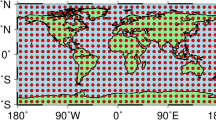Abstract
A prototype based on digital radio technology with associated open-loop Doppler signal processing techniques has been developed to measure a spacecraft’s line-of-sight velocity. The prototype was tested in China’s Chang’E-1 lunar mission relying on S-band telemetry signals transmitted by the satellite, with results showing that the residuals had a RMS value of ∼3 mm/s (1 σ) using 1-sec integration, which is consistent with the Chinese conventional USB (Unified S-Band) tracking system. Such precision is mainly limited by the short-term stability of the atomic (e.g. rubidium) clock at the uplink ground station. It can also be improved with proper calibration to remove some effects of the transmission media (such as solar plasma, troposphere and ionosphere), and a longer integration time (e.g. down to 0.56 mm/s at 34 seconds) allowed by the spacecraft dynamics. The tracking accuracy can also be increased with differential methods that may effectively remove most of the long-term drifts and some of the short-term uncertainties of the uplink atomic clock, thereby further reducing the residuals to the 1 mm/s level. Our experimental tracking data have been used in orbit determination for Chang’E-1, while other applications (such as the upcoming YH-1 Mars orbiter) based on open-loop Doppler tracking will be initiated in the future. Successful application of the prototype to the Chang’E-1 mission in 2008 is believed to have great significance for China’s future deep space exploration.
Similar content being viewed by others
References
Armstrong J W. Low-frequency gravitational wave searches using spacecraft Doppler tracking. Living Rev Relativ, 2006, 9: 1–10
Asmar S W, Renzetti N A. The Deep Space Network as an instrument for radio science research. NASA contractor report, 1993. 80–93
Thornton C L, Border J S. Radiometric Tracking Techniques for Deep-Space Navigation, (JPL DESCANSO Book Series, Vol. 1). New York: John Wiley & Sons, Inc., 2003
Ruggier C J. Frequency and Channel Assignments, 5–7, DSMS Telecommunications Link Design Handbook. Pasadena:, 2000
Yuen J H. Deep Space Telecommunications Systems Engineering. New York: Plenum Press, 1983. 123–178
Ellis J. Deep space navigation with noncoherent tracking data. TDA Progress Report. 1983, 42–74: 12
O’Reilly B D, Chao C C. An evaluation of QVLBI OD analysis of Pioneer 10 encounter data in the presence of unmodeled satellite accelerations. DSN Progress Report, 1974, 42–22: 12
Rourke K H, Ondrasik V J. Application of differenced tracking data types to the zero declination and process noise problems. DSN Progress Report, 1971, 32–1526: 12
Bhaskaran S. The application of noncoherent Doppler data types for deep space navigation. TDA Progress Report, 1995, N95-32221: 54–65
Yang X N, Lou C Y, Xu J L. The Principle And Application Software Defined Radio. Beijing: Electronics Industry Press, 2001. 21–30
Shi L, Zhao S J. Digital Signal Process. Beijing: Science Press, 2007
Ding M Y, Gao X Q. Digital Signal Process. Xi’an: Xi’an Electronic Science and Technology University Press, 2001
Ping J S, Frank W, Yusuke K, et al. High frequency components in LP Doppler data. J Planet Geodesy, 2001, 36: 15–22
Ping J S, Yusuke K, Frank W, et al. A method of getting velocity information from S/C VLBI observation. J Beijing Normal Univ (Natural Science), 2000, 36: 769–774
Bertotti B, Iess L, Tortora P. A test of general relativity using radio links with the cassini spacecraft. Nature, 2003, 425: 374–376
Moyer T D. Formulation for Observed and Computed Values of Deep Space Network Data Types for Navigation (JPL DESCANSO Book Series, Vol. 2). New York: John Wiley & Sons, Inc., 2003
Highsmith D E. The Effect of USO Stability on One-Way Doppler Navigation of the Mars Reconnaissance Orbiter. Jet Propulsion Laboratory, Pasadena, California
Author information
Authors and Affiliations
Corresponding authors
Additional information
Supported by the Innovation Research Plan of CAS, the National Natural Science Foundation of China (Grant Nos. 10973031 and 40904006), the CAS Key Research Program (Grant No. KJCX2-YW-T13-2), and Beijing Aerospace Command and Control Center
Rights and permissions
About this article
Cite this article
Jian, N., Shang, K., Zhang, S. et al. A digital open-loop Doppler processing prototype for deep-space navigation. Sci. China Ser. G-Phys. Mech. Astron. 52, 1849–1857 (2009). https://doi.org/10.1007/s11433-009-0283-y
Received:
Accepted:
Published:
Issue Date:
DOI: https://doi.org/10.1007/s11433-009-0283-y




